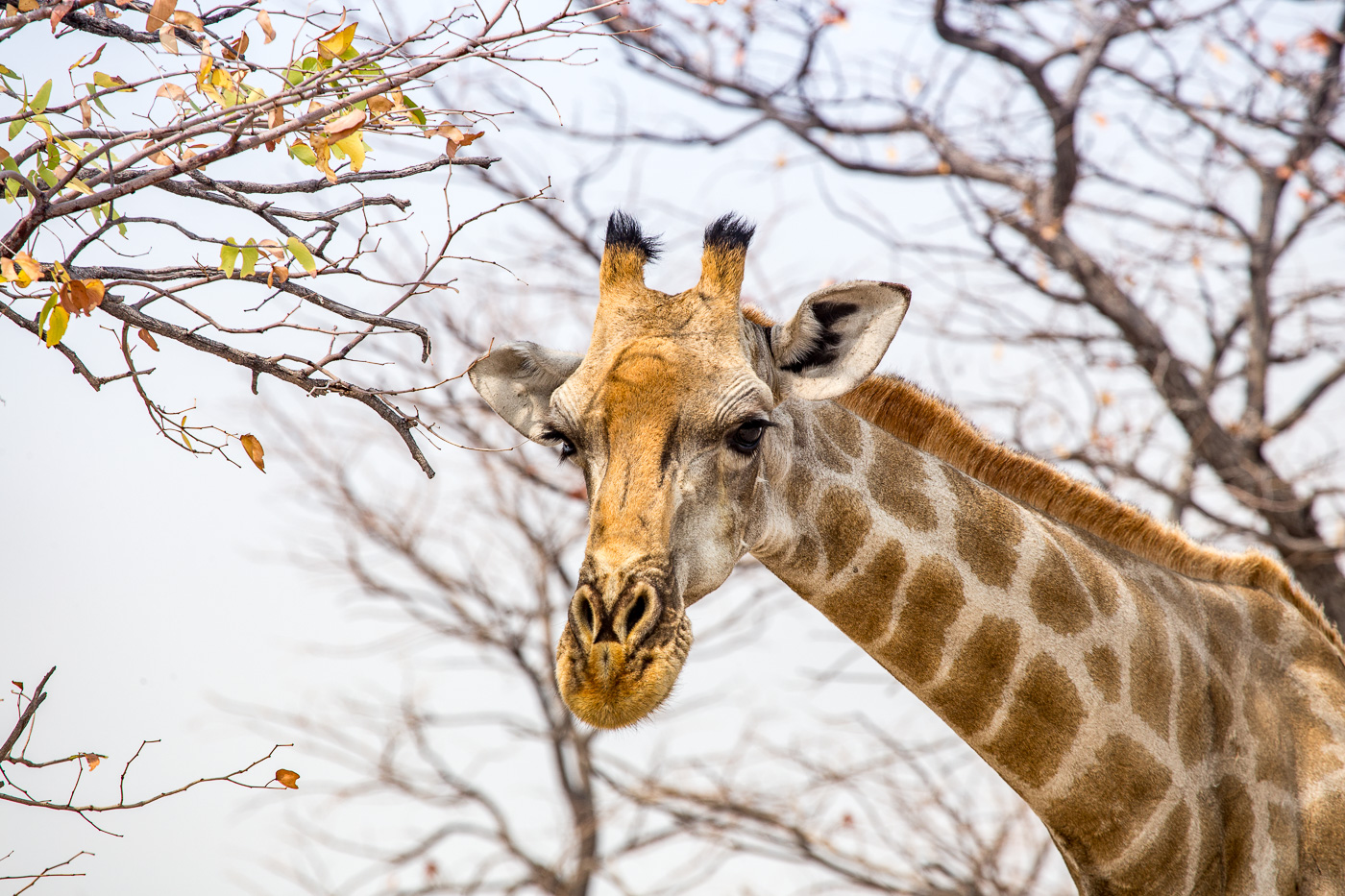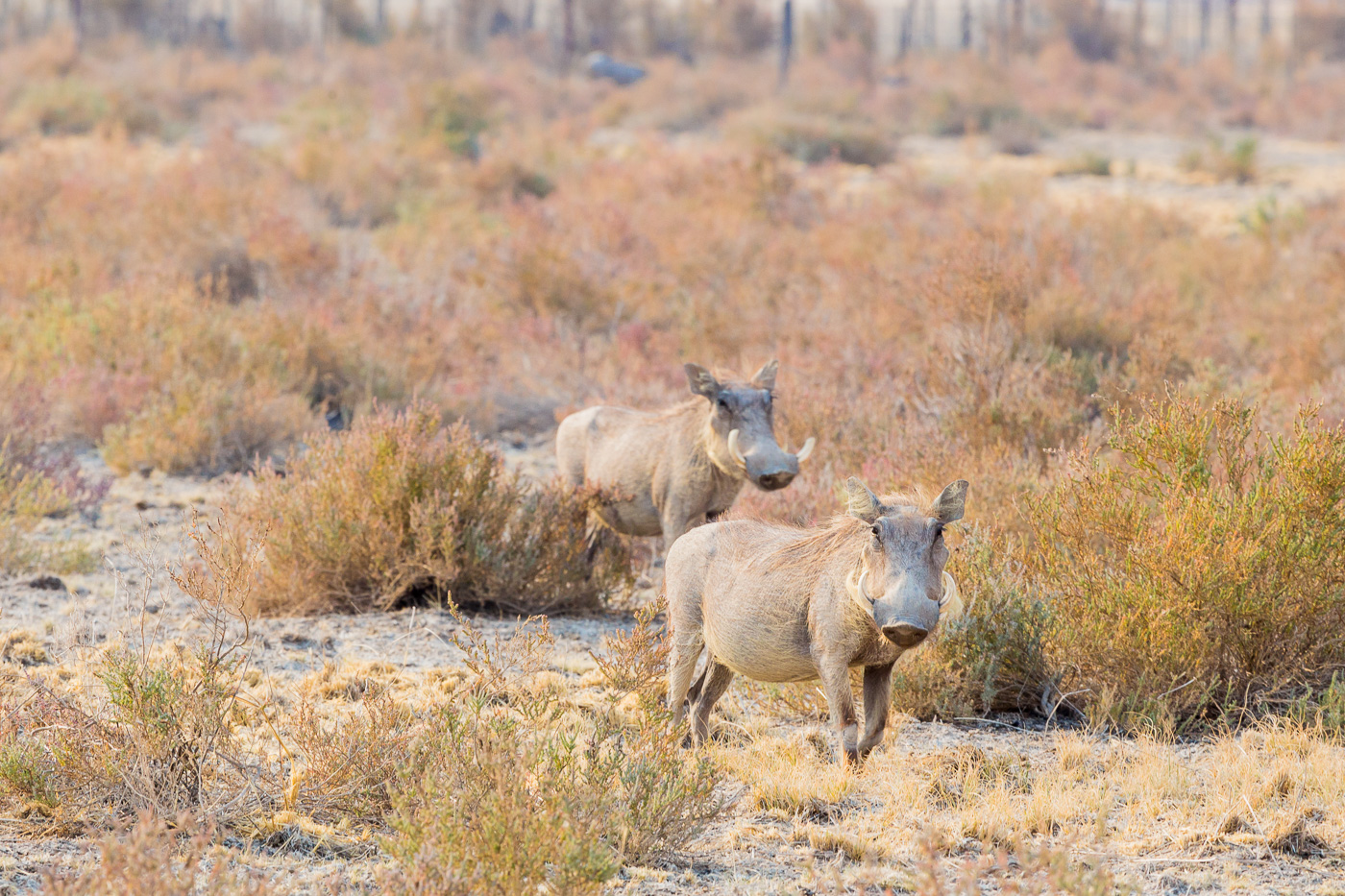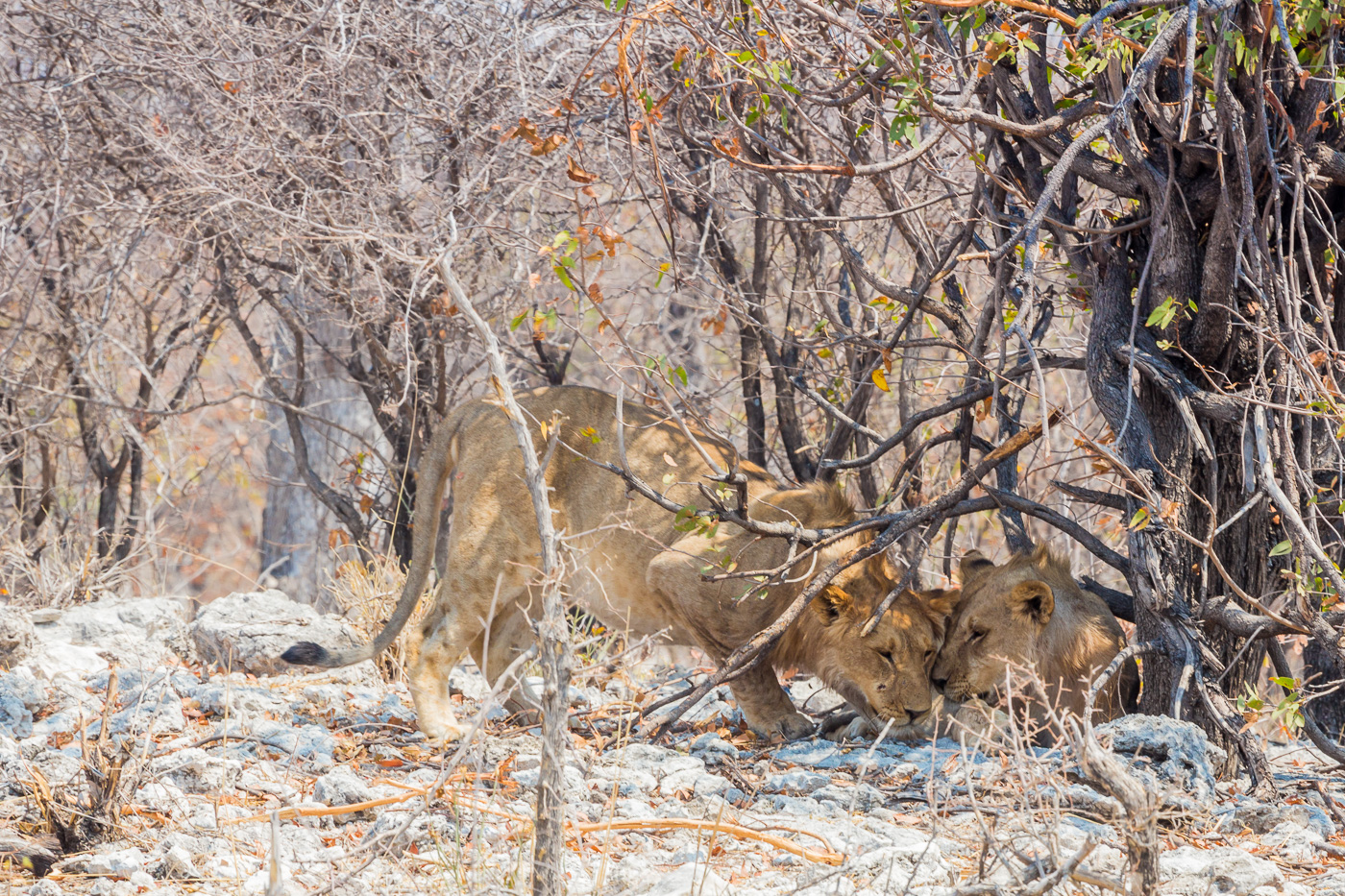In places as scenic as Namibia, it is easy to forget that a camera won’t always perfectly capture the beauty that we are seeing through our own eyes. This is especially true when it comes to game viewing safaris through parks like Etosha National Park and Onguma Game Reserve where animals are free roaming and completely unpredictable. Investing in the following tips for safari photography will go a long way towards capturing photos you’ll be psyched about.
 When it Comes to the Best Lens for Safari, Go Big (300MM or Bigger)
When it Comes to the Best Lens for Safari, Go Big (300MM or Bigger)
Sometimes you get lucky on a safari and the rhinos wander within 5-10 meters of your car. Other times you have to settle for observing from your truck some 30 meters away. Despite our best attempts to will the animals to come close to our 4×4 for better photographs, most of the time we had to enjoy the view from afar. Which is why we were glad to have a professional zoom lens.
For the last year we’ve been traveling with a few lenses including Adam’s go to, and longest – the Canon 24-105 f4L IS. While he loves this all around versatile lens it is worthless for a safari. After having a hard time finding good lens rental companies in Windhoek, we looked further afield to Johannesburg where we found A Lens for Hire. It was a super easy process. After a few emails with Peter we had a flawless Canon 100-400 f4.5-5.6L IS shipped directly to our Cape Town hotel. After two weeks in Namibia we were able to return the lens to Peter on our way back through JoBurg. It was totally worth the investment and our safari photos absolutely wouldn’t have been the same without the 400mm lens.
 Do a Self-Drive
Do a Self-Drive
While I’m sure it’s very possible to get some great shots on a group tour, there is no way we would have captured some of the shots we got if we didn’t do a self-drive. Had we been in a group tour when we spotted the black rhinos in the distance we wouldn’t have been able to turn off the car and camp for however long it took for them to come within 10ft of our 4×4. Not to mention when the mega tour group off road vehicle eventually showed up it scared off the rhinos. There were several times where we were also able to swing around to a better viewing point to try and get a better angle when we spotted one of the Big 5.
 Turn Off Your Car Engine
Turn Off Your Car Engine
This isn’t something we thought about initially, however when you are shooting at 400mm every little bit of movement reduces your photo’s sharpness. With the engine off you can use the window as a resting point to stabilize your heavy 400mm lens. Which leads us to our next tip…
 Stabilize with a Bean Bag or Pool Toy
Stabilize with a Bean Bag or Pool Toy
A stable, steady and patient hand is a must for shooting safari photos. There are plenty of fancy window and door mounting systems out there for safari photography but we also saw a few effective DIY options. Any sort of bean bag should work to give you a stable resting spot while you patiently wait for the lions to make their move. We also saw one photographer using a pool noodle on their 4×4 window which looked like a great solution.
 Keep your Shutter Speed High
Keep your Shutter Speed High
Shooting at 400mm you need little movement but you also need a fast shutter. Unless you plan on spending $10,000 to purchase your own Canon 400mm f2.8L, your lens will likely have a slower shutter with an f-stop in the 4 – 5.6 range. So while you are shooting crank the ISO up to keep your shutter at a minimum of 1/250.
 Be Patient
Be Patient
Ugh – this is not Adam’s strong suit! But being patient is one of the most important safari photography tips. As much as he wanted to get the shot and move on to the next location, so much of the safari experience is about parking yourself at a watering hole and watching life unfold before you. At plenty of locations we ended up waiting 20-30 minutes to see a lion rouse from under a tree or two elephants get into a scuffle at the watering hole. While it didn’t always pay off we were certainly rewarded many times for our patience. Being able to take your time and go slow is one of the best reasons to embark on your own independent self drive safari in Namibia.
Have you been on a photography safari and have any tips to share? Looking to rent a lens for your southern Africa safari? We’d highly recommend reaching out to Peter from A Lens for Hire.
See Also:
Namibia Self Drive Guide: Our Game, Our Rules
Namibia Self Drive Guide 1: How Much Does It Cost?
Namibia Self Drive Guide 2: Choosing Between Self Drives and Guided Tours
Namibia Self Drive Guide 3: Our 10-Day Itinerary
15 Photos That Prove Namibia Has to be Your Next Travel Destination
Sunset Safari at Onguma Game Reserve


